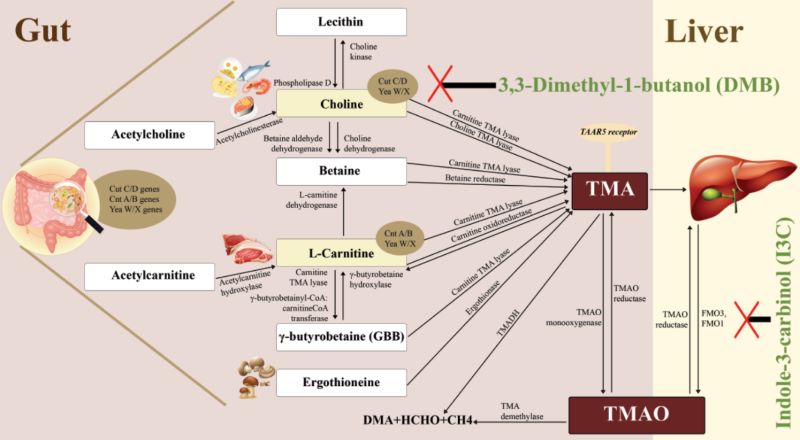The roles of trimethylamine-N-oxide in atherosclerosis and its potential therapeutic aspect: A literature review
DOI:
https://doi.org/10.17305/bb.2023.8893Keywords:
Atherosclerosis, gut microbiome, trimethylamine-N-oxide, coronary artery disease, cardiovascular riskAbstract
Current research supports the evidence that the gut microbiome (GM), which consist of gut microbiota and their biologically active metabolites, is associated with atherosclerosis development. Trimethylamine-N-oxide (TMAO), a metabolite produced by the GM through trimethylamine (TMA) oxidation, significantly enhances the formation and vulnerability of atherosclerotic plaques. TMAO promotes inflammation and oxidative stress in endothelial cells, leading to vascular dysfunction and plaque formation. Dimethyl-1-butanol (DMB), iodomethylcholine (IMC) and fluoromethylcholine (FMC) have been recognized for their ability to reduce plasma TMAO by inhibiting trimethylamine lyase, a bacterial enzyme involved in the choline cleavage anaerobic process, thus reducing TMA formation. Conversely, indole-3-carbinol (I3C) and trigonelline inhibit TMA oxidation by inhibiting flavin-containing monooxygenase-3 (FMO3), resulting in reduced plasma TMAO. The combined use of inhibitors of choline trimethylamine lyase and flavin-containing monooxygenase-3 could provide novel therapeutic strategies for cardiovascular disease prevention by stabilizing existing atherosclerotic plaques. This review aims to present the current evidence of the roles of TMA/TMAO in atherosclerosis as well as its potential therapeutic prevention aspects.
Citations
Downloads

Downloads
Additional Files
Published
Issue
Section
Categories
License
Copyright (c) 2023 Yudi Her Oktaviono, Ariikah Dyah Lamara, Pandit Bagus Tri Saputra, Jannatin Nisa Arnindita, Diar Pasahari, Mahendra Eko Saputra, Ni Made Adnya Suasti

This work is licensed under a Creative Commons Attribution 4.0 International License.
How to Cite
Accepted 2023-05-21
Published 2023-11-03









